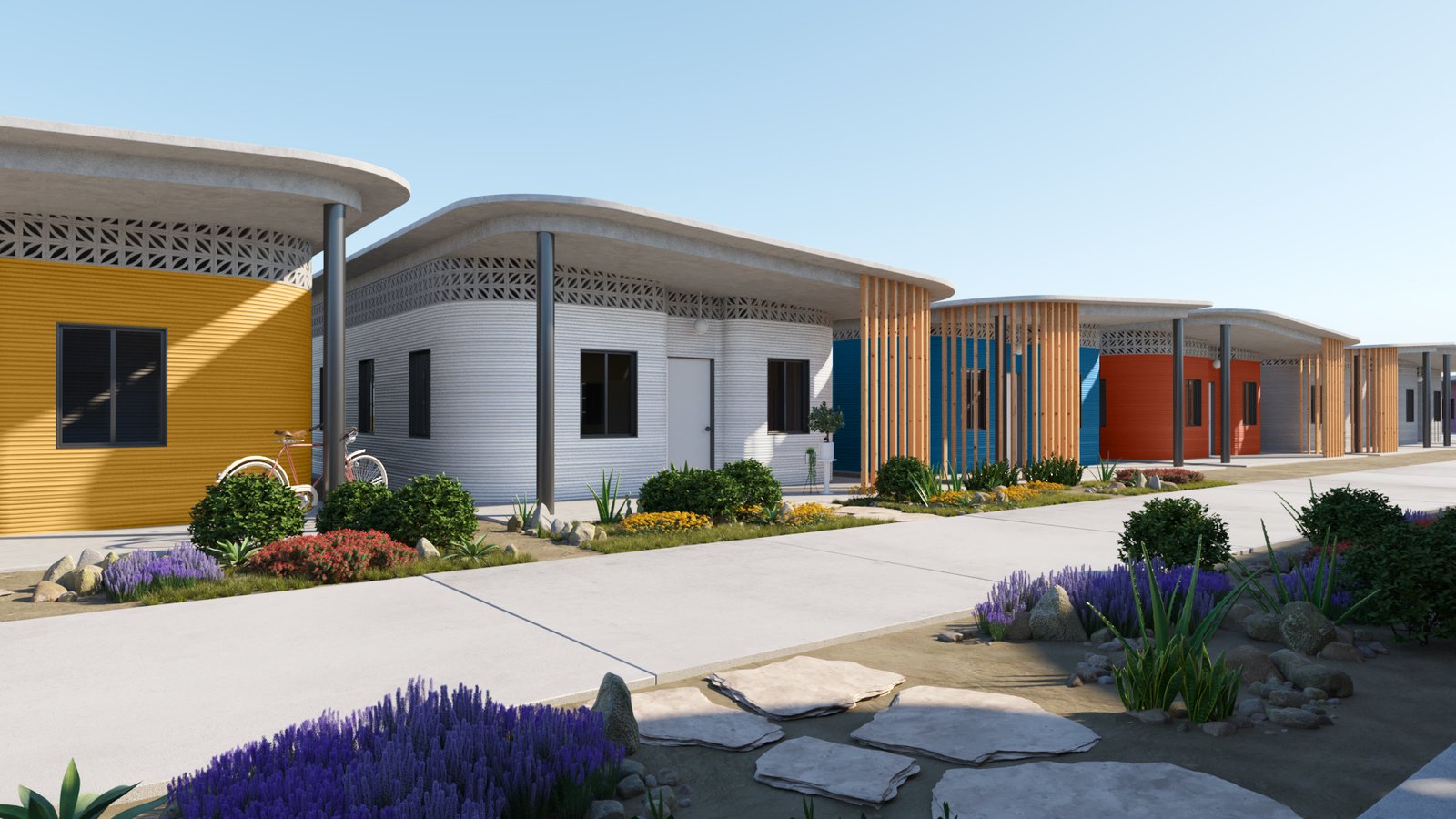The World’s First 3D-Printed Community
Around the world, millions of people in developing countries are living in poverty. Properties are often no more than makeshift shelters, with poor hygiene, no access to clean water and vulnerable to extreme weather conditions. Now a collaboration between forward-thinking companies is trying to change all that with houses that can be constructed in just 24 hours, with almost zero waste.
New Story, a non-profit company working to end global homelessness, has partnered with Icon, a homebuilding robotics company, and design firm Fuseproject, to create the world’s first 3D-printed village. The team is currently working with communities in deprived areas of Latin America to create a village of 50 affordable houses in an as yet undisclosed location.
The design of each property has been informed by an in-depth consultation with the community who are to live in the village. The future residents explained the importance of outside space for cooking, growing vegetables and rearing chickens, which is an integral part of their heritage. Other elements of the design were dictated by the weather. Extended overhangs on the roof provide shade for the front and rear patios in the summer, while specially designed windows and angled roofs with a ridged finish, direct rain away from the walls. Air bricks are used below the roofline to encourage the passage of fresh air through the building and improve ventilation.
Images and video courtesy of Motionland for New Story.
Perhaps most impressively, the buildings have been designed so that as a family grows, the property can be extended to a second storey. The team is currently developing concrete which is strong enough to bear the load of an upper level, also created by the 3D printer. The houses are also produced in a range of layouts which can be adjusted to suit the individual needs of the family who will be living there.
Due to concrete being a relatively cheap material, and the labour costs being extremely low, the projected cost of each home is just £3150. But affordable doesn't mean inferior. The concrete used in the demo house in Austin, Texas has been strengthened to withstand the most extreme weather conditions, and last for decades. The team is also experimenting with coloured concretes, having already produced one property in a shade of red brick, and another in blue, with a view to creating a colourful, vibrant aesthetic in keeping with Latin American tradition.
 Images and video courtesy of Motionland for New Story.
Images and video courtesy of Motionland for New Story.
It's encouraging to see cutting-edge technology being used to benefit people who are usually the last to access such advances. A fast and affordable solution to global homelessness, 3D house printing could give deprived communities almost instant access to homes which are safe and comfortable.
New Story CEO Brett Hagler sums up the potentially world-changing implications of the project:
"We feel it’s our responsibility to challenge traditional methods. Linear methods will never reach the billion-plus people who need safe homes. Challenging our assumptions, iterating based on data, and taking calculated risks on innovative ideas will allow us to reach more families with the best possible solutions, exponentially faster."